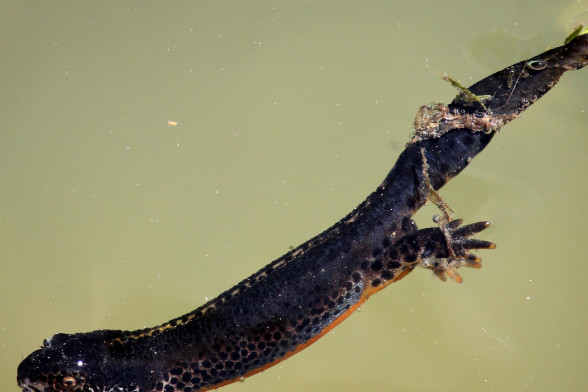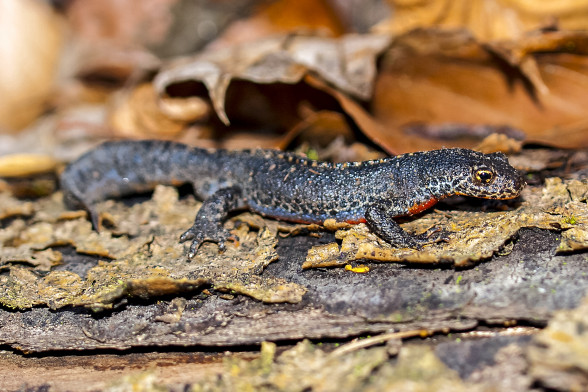
Newt
Habitat
Newts spend spring and summer in water bodies, choosing small ponds, slow-flowing ditches or gravel pits. After breeding, adult newts hide during the day in leaf piles, holes, caves and under fallen tree trunks. They are also often found in cellars or wood sheds. They usually overwinter in these hiding places from late September onwards.
Diet
Newts feed on small invertebrates such as millipedes, insects, mites and other arthropods, earthworms and molluscs.
Important and interesting facts
Latvia is home to 2 species of newts: the common newt (smooth newt) and the crested newt.
Not very demanding on water quality – can be found in quite heavily polluted water bodies. Activity usually starts when the water temperature reaches +4...+7 degrees Celsius. During the breeding season, the female lays her eggs by carefully wrapping them in the leaves of aquatic plants. The larvae start feeding on small aquatic animals the day after hatching. After metamorphosis, the young animals leave the water body immediately and their lifestyle is the same as that of adults.
In its aquatic phase, the newt is active round the clock, on land at dusk and in the dark.
The body length of the common newt with tail is 7-8 cm, rarely up to 10 cm. The skin is smooth. Back brown, sandy yellow or greenish grey, belly yellowish or pale orange with small black spots.
Length of the crested newt with tail is up to 15 cm. Skin finely rugose. Back black or dark grey, belly orange or bright yellow with large black spots.
Information sources: latvijasdaba.lv, Wikipedia
Photos: pixabay.com

